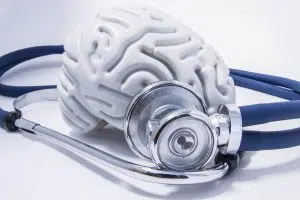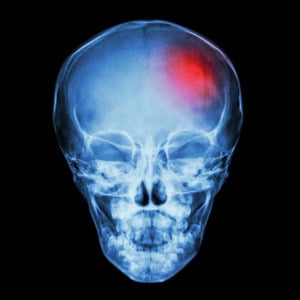In the aftermath of a traumatic brain injury (TBI) in Brooklyn, victims and their families often grapple with physical, emotional, and financial challenges. These injuries can be catastrophic. Medical treatment for a TBI can be extensive–it could take months or even years to recover, while medical expenses continue to escalate. Statistics reveal that in New York alone TBIs result in more than 2,200 deaths, 17,000 hospitalizations, and almost 38,000 emergency department visits every year.
With over 50 years of experience, our Brooklyn brain injury lawyers at The Rothenberg Law Firm have established an exemplary reputation in New York for providing legal representation to individuals who have suffered TBIs due to negligence. Contact us for a free consultation. We are ready to fight to ensure you receive maximum compensation.
What Is A Traumatic Brain Injury?
A traumatic brain injury (TBI) is not your typical head injury. A TBI refers to damage or dysfunction of the brain caused by an external force or traumatic event. TBIs can vary in severity. Common causes include car accidents, falls, sports injuries, workplace accidents (especially construction accidents), assaults, and medical malpractice.
The effects of a TBI can be temporary or long-lasting and will vary for each brain injury victim. They can significantly impact a person’s physical, cognitive, emotional, and behavioral functioning.
Some common symptoms of a traumatic brain injury include:
- Physical Symptoms: Headaches, dizziness, nausea, vomiting, blurred vision, difficulty with balance, sensitivity to light or noise, fatigue, and changes in sleep patterns.
- Cognitive Symptoms: Memory problems, difficulty concentrating or paying attention, slowed thinking, memory loss, confusion, disorientation, and difficulty with problem-solving and decision-making.
- Emotional and Behavioral Symptoms: Mood swings, irritability, depression, anxiety, agitation, impulsivity, changes in personality, and difficulty controlling emotions.
- Sensory Symptoms: Changes in the ability to taste, smell, or hear, ringing in the ears (tinnitus), and changes in sensitivity to touch or temperature.
- Communication and Language Difficulties: Trouble finding words, slurred speech, difficulty understanding or expressing language, and impaired reading or writing skills.
Types of Traumatic Brain Injuries
TBIs are classified based on the nature and extent of the brain damage. Here are some common types of traumatic brain injuries:
Concussion
According to the Centers for Disease Control, a concussion is a “type of traumatic brain injury–or TBI–caused by a bump, blow, or jolt to the head or by a hit to the body that causes the head and brain to move rapidly back and forth.” Some might think of these as a milder type of TBI, but the CDC considers them to be quite serious.
Indeed, as far as head injuries go, one source makes clear that “even mild concussions should not be taken lightly.” They can induce serious brain trauma with a potential loss of consciousness, as well as other impairments. Consider this unique fact: in New York alone, about 4,000 children 19 and under are treated by hospitals for sports-related TBIs many of which are concussions every year.
Contusion
A contusion is a bruise on the brain caused by a direct impact to the head. It occurs when blood vessels rupture, leading to localized brain tissue damage, and can cause cognitive impairments, motor deficits, and other neurological symptoms.
Penetrating Injury
Penetrating brain injuries occur when an object, such as a bullet or a piece of a fractured skull, penetrates the brain tissue. These injuries can cause extensive damage, including bleeding, inflammation, and destruction of brain cells.
Coup-Contrecoup Injury
Coup-Contrecoup injuries occur when the brain is injured at two points. The initial impact causes damage to the side of the brain that was directly hit (coup), and the brain rebounds and hits the opposite side of the skull, causing additional damage (contrecoup). It occurs in situations when the head is struck with great force.
Diffuse Axonal Injury (DAI)
DAI occurs when the brain moves back and forth inside the skull, causing damage to nerve fibers (axons) throughout the brain. This type of injury often results from high-impact accidents, such as car crashes or shaken baby syndrome. DAI can lead to widespread brain damage and severe cognitive and neurological impairments.
Hematoma
A hematoma is a collection of blood outside the blood vessels, typically caused by bleeding in the brain after a traumatic injury. Types of hematomas associated with TBIs include epidural hematoma (between the skull and the outer membrane of the brain), subdural hematoma (between the brain and the dura mater), and intracerebral hematoma (within the brain tissue).
Second Impact Syndrome
Second impact syndrome occurs when an individual sustains a second concussion before the symptoms of a previous concussion have fully resolved. The brain is more vulnerable to additional injury, leading to rapid and severe swelling, which can be life-threatening.
How To Prove A Traumatic Brain Injury Case
Proving a TBI case requires a thorough and strategic approach. Our Brooklyn traumatic brain injury attorneys can work with you to obtain the evidence and documentation to prove your case.
Here are some key elements involved in proving a TBI case:
- Medical Documentation: This includes obtaining comprehensive medical records, diagnostic tests (such as CT scans or MRIs), and expert opinions from neurologists, neuropsychologists, or other medical professionals specializing in brain injuries. It’s critical then that when you seek medical attention, that you keep track of all the documentation provided to you by your physicians.
- Accident Investigation: This may involve obtaining police reports, witness statements, photographs or videos of the accident scene, and any available surveillance footage. Building any personal injury case demands tremendous effort and attention to detail. Our personal injury traumatic brain injury lawyers are prepared to track down whatever piece of evidence may be needed to successfully support your case.
- Establishing Negligence: This may involve establishing that the defendant had a duty of care, breached that duty, and that the breach directly resulted in the TBI. Personal injury attorneys are used to handling cases and understand how to define and establish negligence. But when it comes to handling a TBI case, having lawyers who are intimately familiar with the nuances of a TBI case will better position your case for success. Our experience in TBI litigation enables us to better engage with the facts, evidence, and complexities that often arise in a case involving a traumatic brain injury.
- Witness Testimony: Eyewitness accounts can be crucial in proving a TBI Identifying and interviewing witnesses who observed the accident and its aftermath can provide valuable testimony to support your claim.
- Expert Testimony: Medical experts, accident reconstruction specialists, vocational rehabilitation experts, and economists can provide professional opinions and testimony on the severity of the injury, the impact on the victim’s life, the need for ongoing medical care, and the financial losses suffered as a result of the TBI. We’re prepared to engage experts no matter where they may be located–whether in Brooklyn, Queens, Manhattan, the Bronx, or Staten Island.
- Damages: This includes medical bills, rehabilitation expenses, lost wages, diminished earning capacity, pain and suffering, emotional distress, and loss of enjoyment of life.
What separates the Rothenberg Law Firm from other lawyers is that our brain injury lawyers have extensive experience litigating and handling TBI cases in New York City. One should not seek out just any accident attorney or any injury law firm. The nature of TBI cases is such that if one wants to maximize his or her chances of success, he or she should seek out those who know how to deal with these cases specifically.
Our track record of having recovered billions in verdicts and settlements is a testament to the success we’ve had in representing accident victims and brain injury victims in particular. This spans all five boroughs of New York City. That being said, we understand that trying cases in Brooklyn may be very different from handling cases in Manhattan or Queens and we are prepared to handle your case in the best way possible in the complex legal environment in New York.
Compensation For a Traumatic Brain Injury
Compensation for TBI in Brooklyn can vary significantly based on the specific details of the case, including the severity of the TBI and the impact on the victim’s life. We will fight to make sure you recover the maximum amount possible from the insurance company for your injuries. There are also times that one may become eligible for certain governmental benefits like Social Security Disability after experiencing a TBI and we will help you understand your rights.
Schedule a Free Consultation with The Rothenberg Law Firm
Our Brooklyn traumatic brain injury attorneys will fight to ensure that your rights are protected. We leverage our extensive legal knowledge, resources, and dedication to pursuing the compensation you deserve.
We handle all the legal complexities, including communicating with insurance companies, which allows you to focus on your recovery and well-being. If you believe you or a loved one has sustained a traumatic brain injury, call us today for a free consultation–there is no obligation to hire us. We work on a contingency fee basis, so there are no upfront legal fees. And to better serve Brooklyn residents, we have a law office in Brooklyn.






